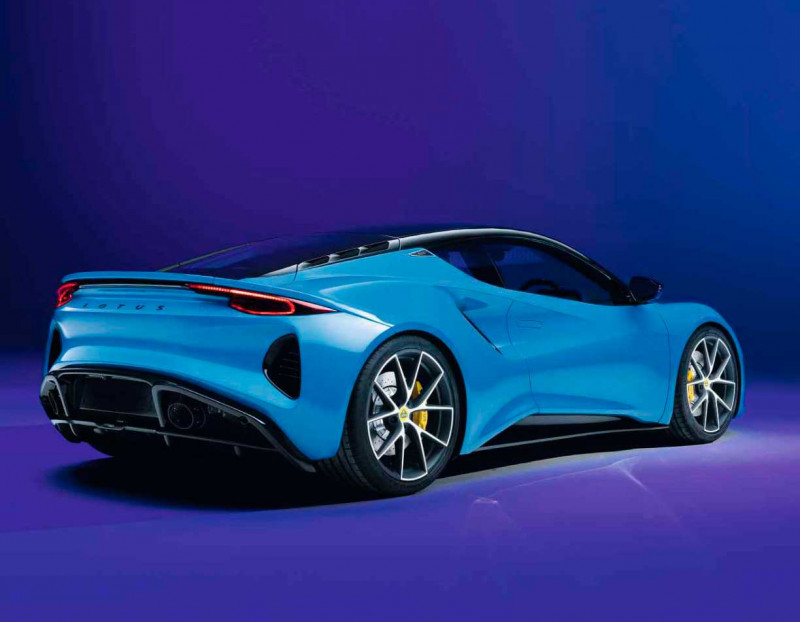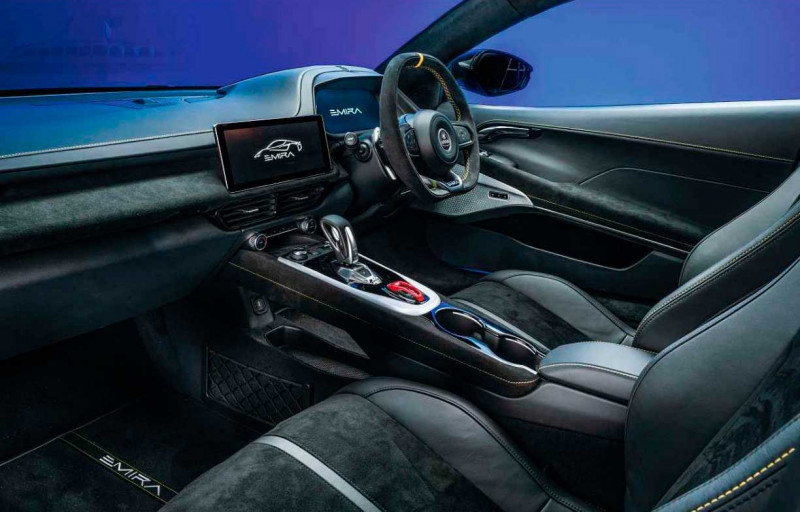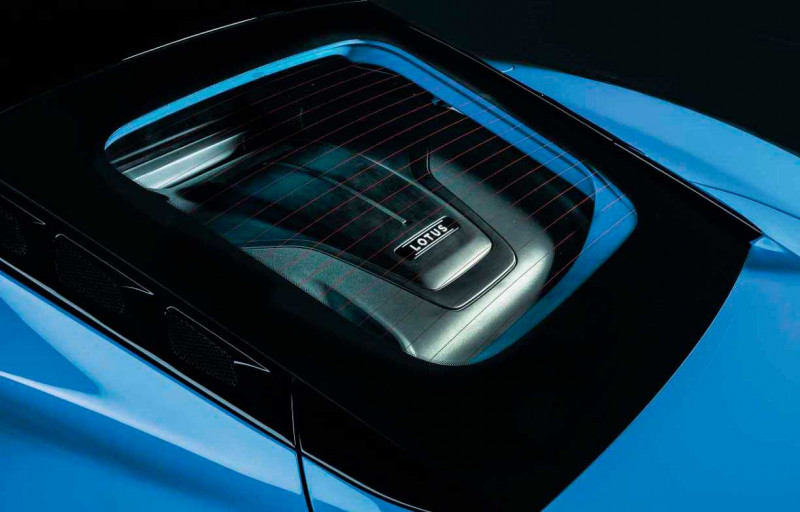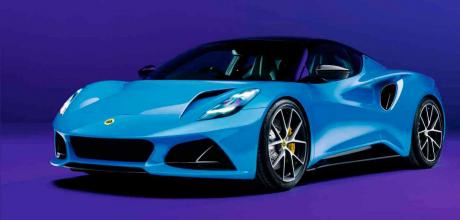2022 Lotus Emira
The Emira is the most significant new Lotus since the original Elise. We take our first detailed look at the new car – and the impressive new facility that will build it.
Hethel’s all-new sports car is coming, and a revitalised production facility is set to make it the highest quality, most competitive Lotus ever. Stuart Gallagher has the full details
We’ve been here before; many times before. We’ve waited for the new dawn, for the rebirth to deliver the bright future. We’ve waited for the next new owner to release the potential that others have failed to do, for the latest high-profile hire to recruit his high profile mates before scurrying away on discovering just how hard running a car company actually is. It’s why news of how Lotus is going to turn itself around always generates a disproportionate amount of column inches in relation to the success that any of the aforementioned achieve.

So why is it different this time? What makes this Lotus reboot any different from the last half dozen? Two factors: Geely, and the people – led by Matt Windle – that it has invested in to get the job done. And while the 2022 Lotus Emira is the result of the remarkable journey Lotus has been on since the Chinese giant bought its controlling stake in 2017, it’s the detail that’s been sweated to deliver the new, two-seater, mid-engined sports car that suggests Lotus is finally in a position to make good on its promise.
Emira is a home-grown Lotus, designed, developed and built at Hethel by a team that is expanding by the day – 200 additional staff have been recruited directly to deliver the new car. It will be offered with two engine options. The first is the venerable 400bhp 3.5-litre supercharged V6 sourced from Toyota and mated to a choice of six-speed-manual and automatic gearboxes. There will also be a 350bhp 2-litre, turbocharged four-cylinder engine, the same engine in fact that you will find in AMG’s pugnacious A35 hatchback and, as in the Mercedes, available only with a dual-clutch transmission.

Lotus did look within the Geely group for a suitable four-cylinder engine but the work required to make it appropriate for the Emira didn’t add up, and neither did Lotus designing, developing and building its own engine. So the company went to Mercedes (Geely chairman Li Shufu owns a 9.96 per cent stake in Daimler) who duly obliged – and signed up as a technical partner for future projects, too.
Both powertrains will be installed in a new bonded aluminium chassis produced at Lotus Advanced Structures in Norwich. This 27,000 square metre facility will also fabricate everything from the Emira’s fuel tank to its wishbones – in fact every component possible, down to the smallest bracket, a process that will allow unprecedented quality control for a Lotus, a key requirement if the new £60,000 sports car is to be the global success the company needs it to be.
Home to the Emira will be a brand new 12,000 square metre production hall unlike anything else seen at Hethel. Any thoughts of converting or combining the existing production halls, currently building the last Elise and Exige models, was a non-starter. ‘We needed to do it this way,’ explains Matt Windle as we stand in what will become the Emira’s birthplace. ‘This is what we needed to do to survive.’
Previous investment at Hethel barely kept Lotus alive, keeping the lights on and the sports cars trickling out of the factory at the end of each month. ‘With this investment, this new production hall, our new paint shop, and all the new infrastructure across the site, we will go from building 40 cars a month to 25 a day on a four-day week, with our new logistics partner coming every day to collect cars rather than us rushing around at the end of the month to make sure we fill the transporters.’

Windle is like a kid in a toy shop as he shows evo around the developing Hethel site. The new automated production hall is the focus, but he’s equally proud of how Lotus is now able to provide its loyal existing employees and every new recruit with a 21st-century working environment. Those responsible for Emira production will overlook the line from their elevated open-plan office on one side, with the famous Hethel test track visible behind them on the other. All staff benefit from a new canteen and can park their cars in a car park that no longer resembles a battlefield. Small changes, but they make a big difference to morale. ‘Let’s be honest, it’s been tough working for Lotus and many have heard the promises of a new start too many times,’ says Windle. ‘This time, whether it’s the new canteen or the Emira production line, I hope they can see that change is happening and that it’s for the long term.
‘For new recruits, it sets the tone of the company. It’s not about what hours am I working, where will my desk be. It’s about being flexible, being where you need to be, what are the benefits of being at Lotus. We’re creating an environment that people want to be part of so they can perform at their best.’
The long term for Lotus-means electrification, with the Emira the last new internal combustion engine sports car to be born at Potash Lane. With Evora production already ended, Elise and Exige production concludes in November when the two halls will be consumed by the demands of building Lotus’s sole sports car. One has already started the transformation, with Elise and Exige production now only occupying the old mechanical line; What was the trim line is being converted to a sub-assembly hall, with the first robots and automated components being installed and plugged into the mains as Windle guides us around. When Elise and Exige production comes to an end, their production hall will be transformed into another automated sub-assembly facility. The existing paint shop will also be skipped and converted into a state-of-the-art body panel storage facility, with an all-new paint shop in the final throws of being finished ahead of the Emira’s launch.
Everywhere you turn there is a hive of activity to ready the Emira’s new home. Validation prototypes numbers two and three (the early Evora-based prototypes that have been used until now are nearing the end of their working lives) are sitting waiting for their bumpers to be painted before they embark on their respective test programmes. The high-voltage electrical system required to feed the production lines is online; a new one-way system to prevent gridlock around Hethel when components arrive and finished cars leave is being finalised; a new IT system connects Lotus to the outside world. Every building, new and old, is in the process of being painted; even the test track tyre barriers are being cleaned.

This forensic level of detailed scrutiny is all designed to make Lotus the most efficient it has ever been, which in turn should bring profitability and thus sustainability and survival. Production will treble but the workforce will increase by only 50 per cent thanks to the efficiencies being put in place, and none of it at the expense of quality: Lotus is confident that the Emira will be the highest quality production car it has ever built, while retaining the bespoke appeal of a British sports car.
Which leads us to the Emira itself. It’s rare for a new car to cause a sharp intake of breath, which then requires a moment to steady yourself, but that’s the effect the Emira has the first time you see it. To those of us normally blasé about this sort of stuff, the Emira is a real breath of fresh air. Identifiable as a Lotus of today but very much a link to the Lotus of tomorrow.
It’s the dimensions that take a moment to process. It’s longer and wider than both Alpine’s A110 and Porsche’s Cayman, but lower than both, giving it a more squat and muscular stance, though with a longer wheelbase than either its proportions are spot-on. In the isolation of a photo studio it looks more mature than those rivals, too, which will surely help Lotus span the customer demographic currently enjoying an A110 or Cayman and those looking to step up from either but not able or prepared to go down the more expensive super-sports car route offered by the likes of Aston Martin, Porsche and McLaren.
There are hints of Evija in the surface detailing, but Russell Carr and his team have navigated a fine line when it comes to linking this series-production sports car to the £2million electric hypercar. Striking intakes in the front bonnet and upright LED headlights link tomorrow’s direction with today’s signature Lotus design elements in the form of a trio of openings in the front bumper. In profile, the creases, ducts and surfacing are simple but effective in providing the Emira with a taut waistline and a new, clearly defined look. The rear three-quarter buttresses rise into the roofline, itself running seamlessly into the engine cover, and the rear blends Evija-style vents with a clean design that combines function (exhausts and diffuser) with form, and without giving the impression that the Emira’s innards are trying to make a break for freedom.
It’s an athletic design rather than an aggressive one, but one that’s cohesive and confident, a design you feel McLaren will take one look at and think: ‘Bugger, Lotus has designed the car we wanted the Artura to be.’ There are no active aero devices fitted to the Emira, a result of the engineering philosophy that has been applied to the car; instead, passive downforce is generated across the front and rear axles at all speeds, increasing accordingly as the pace picks up.
Inside is functional rather than revolutionary, with a traditional less-is-more Lotus approach to everything from the seats to the new TFT instrument display. The floating transmission tunnel is reminiscent of an A110’s, but that’s no bad thing, and V6-engined cars fitted with the manual gearbox retain the exposed gear linkage introduced on Lotus’s outgoing models. It’s an interior that feels comforting without being claustrophobic, serviceable without being spartan, and a clear ergonomic success. Having the road race towards you through the wraparound screen can’t come soon enough.
The Emira has the widest track of any Lotus road car that’s gone before. There are double wishbones at each corner, and it will be offered with two suspension settings: Touring and Sport, the latter available as part of a Lotus Driver’s Pack that stiffens the damping and lowers the ride height. Hydraulically assisted steering is retained, while the brakes consist of drilled discs with six-piston calipers for the front and four-pots for the rear.
Twenty-inch wheels are fitted front and rear, with a 245/35 tyre on the front axle, 265/30 on the rear. Goodyear’s Eagle F1 Supersport is the standard rubber fitment with Michelin’s Pilot Sport Cup 2 available as part of the Driver’s Pack. Away from the traditional driver-focused attributes that make a Lotus a Lotus, there is also a raft of technology to bring the new offering thoroughly into the modern age, from auto-dimming mirrors to launch control and the electronic safety systems that are a must for any global car. The reason many gave for not buying a Lotus – specifically, being too pared-back – appears to have been addressed with the Emira. It’s also been designed and developed to be a useable sports car, which means luggage space for more than a spare face mask and a door bin that can swallow a drinks bottle. Small details, big improvements.
‘IT’S RARE FOR A CAR TO CAUSE A SHARP INTAKE OF BREATH, BUT THAT’S THE EFFECT THE EMIRA HAS’
Some will dismiss the Emira as a final throw of the dice in a game few are interested in playing for much longer, but this is just the beginning of the 21st-century Lotus story, with more derivatives planned and the capacity and capability to deliver more of what the customer wants rather than what the factory is capable of producing. It may be the last petrol-engined Lotus but the new dawn has only just begun to break at Hethel, and this time it looks set to herald a genuinely bright future. Expect people in Dieppe, Stuttgart, Gaydon and Woking to start taking a lot more notice of what’s going on in Norfolk.
Left: in-line four-cylinder and V6 engine options will be offered; cabin takes Lotus to a new level in terms of ergonomics, tech and useability. Below and right: Emira artfully blends elements of Lotuses past, present and future but makes its own clear design statement, inside as well as out.
HEAD TO HEAD AGAINST ITS RIVALS
- ALPINE A110S
- Engine 4-cyl, 1798cc, turbo
- Transmission 6-speed DCT
- Max Power 288bhp @ 6400rpm
- Max Torque 236lbft @ 2000rpm
- Weight 1114kg
- Power-to-weight 263bhp/ton
- 0-62mph 4.4sec
- Top speed 161mph
- Price in UK £57,140
- CAYMAN S
- Engine 4-cyl, 2497cc, turbo
- Transmission 6-speed man/7spd PDK
- Max Power 345bhp @ 6500rpm
- Max Torque 310lbft @ 2100rpm
- Weight 1355kg
- Power-to-weight 259bhp/ton
- 0-62mph 4.6sec
- Top speed 177mph
- Price in UK £53,030
- EMIRA
- Engine 4-cyl, 1991cc, turbo
- Transmission 8-speedDCT
- Max Power 360bhp @ TBC
- Max Torque 300lbft @ TBC
- Weight 1405kg(min)
- Power-to-weight 260bhp/ton(est)
- 0-62mph 4.5sec (est)
- Top speed 170mph(est)
- Price in UK <£60,000
- CAYMAN GTS 4.0
- Engine 6-cyl, 3995cc
- Transmission 6-speed man/7spd PDK
- Max Power 394bhp @ 7000rpm
- Max Torque 310lbft @ 5000rpm
- Weight 1405kg
- Power-to-weight 285bhp/ton
- 0-62mph 4.5sec
- Top speed 182mph
- Price in UK £64,480
- EMIRA 3.5
- Engine 6-cyl, 3456cc, supercharged
- Transmission 6-speed man /6-speed-auto
- Max Power 400bhp @ 7000rpm(est)
- Max Torque 315lbft @ 3500rpm(est)
- Weight 1405kg(min)
- Power-to-weight 289bhp/ton(est)
- 0-62mph 4.0sec (est)
- Top speed 180mph(est)
- Price in UK £70,000+



About the same power, similar weight, and similar price as a Porsche Cayman/Boxster GTS 4.0. I think it'll fool a lot of people thinking it's a supercar. In terms of brand recognition and value, I don't think it's better than the Porsche. But I would be more inclined to buy this instead because it's just more special.
That's because your ahem, older like me. I've had a little manual hot hatchback and Loved smashing it's gearbox left right and centre. I've also had mid size German saloons with automatic gearboxes. Some with manual overide. So I'd definitely go the latter route now! :)
Well those DCT boxes shift way quicker than i ever could in a manual. I remember vividly the heavy clutch setup in the XY GTHO and after tearing around mountain roads i needed a leg massage. It was ridiculous heavy and no power steering didn't help either lol...
Emira: off with its roof I was thrilled to read about the superbly styled Lotus Emira (cover story), a seemingly perfect, modern replacement for the legendary Elise. I could be very tempted to buy one as a change from my beloved Honda S2000 – 12 years old and only 26,000 miles. However, there is a huge impediment. Why is it not a convertible sports car? It’s crying out for an MX-5-style simple pull-over hood, or a pieced carbon roof, which could stow. We should pester Lotus to work on a convertible. Surely there is so little competition that the international market would welcome it.